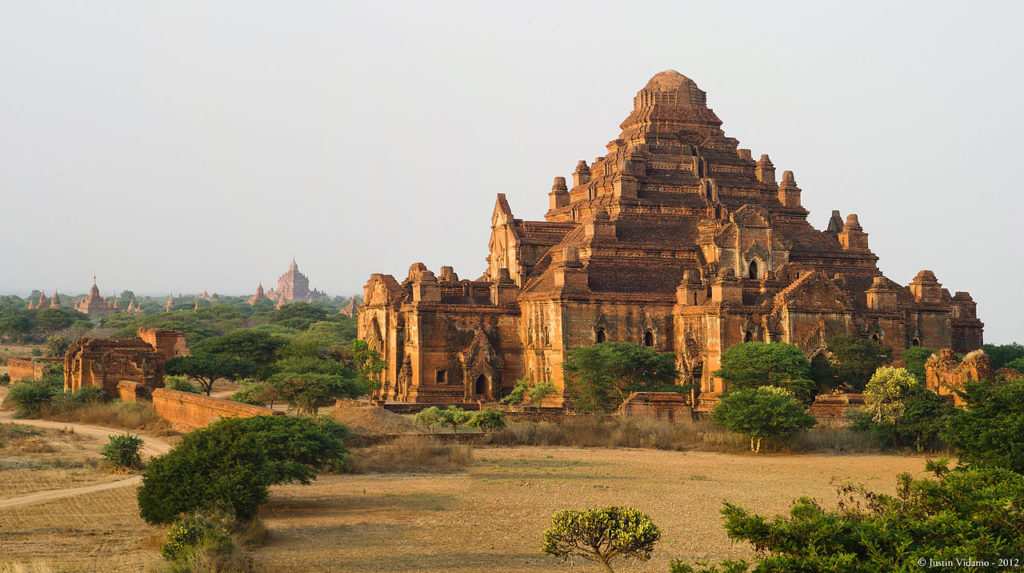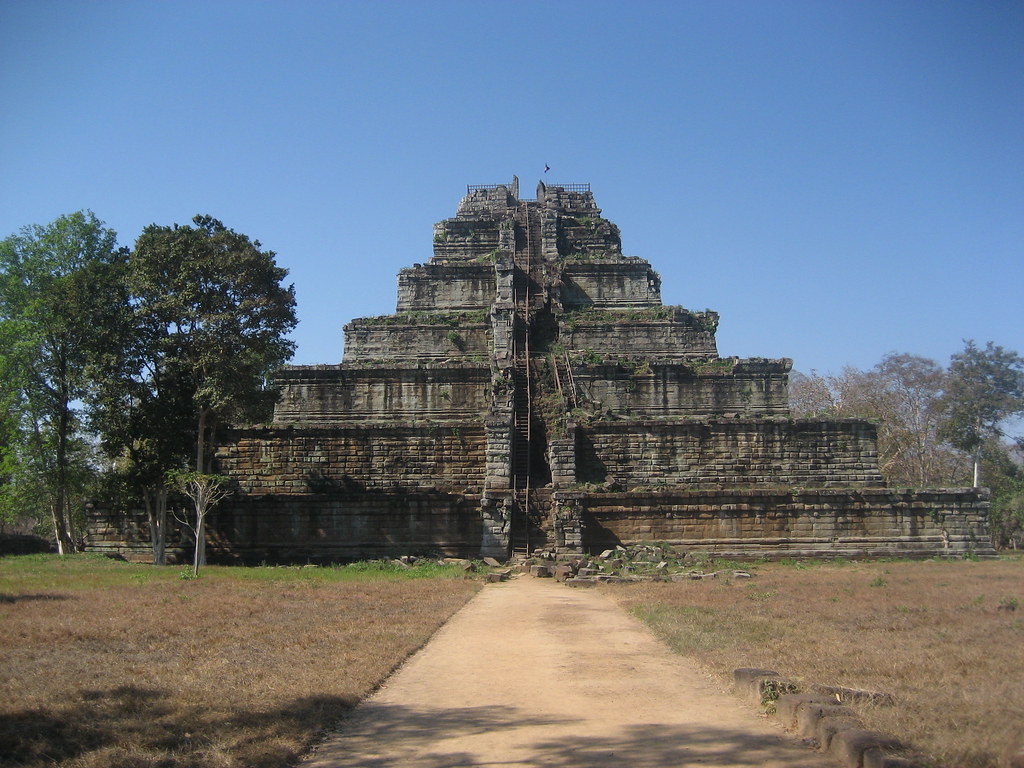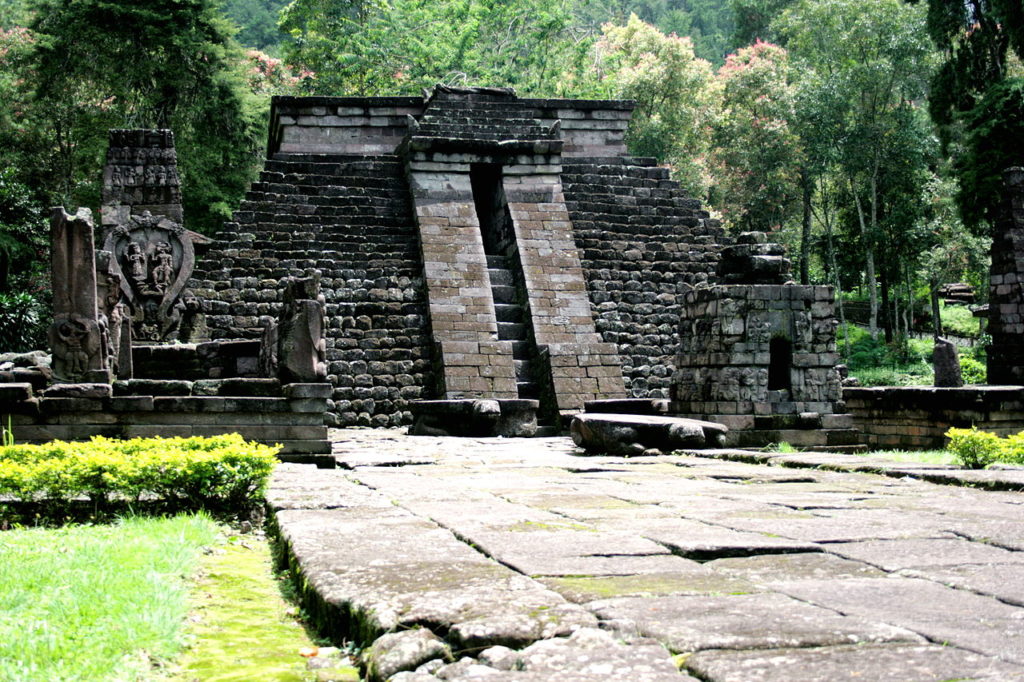Humans have always been in awe of mountains, and have attempted to emulate their towering majesty by erecting pyramids. Like mountains, many ancient cultures believed they could find the height of spirituality and a place to connect with the gods at the top of such pyramids. And while the first thing that comes to mind when we hear the word “pyramid” is probably the Great Pyramid of Giza or the Mesoamerican pyramids, these gigantic monuments can be found the world over.
This includes Southeast Asia, where civilisations long gone erected some truly spellbinding pyramidic structures.
1. Myanmar
There are many temples in the ancient Burmese city of Bagan that resemble pyramids, including the well-known Shwesandaw and Bulethi temples.
 The largest one, Dhammayangyi, is an imposing structure, standing 55 metres tall and extending approximately 78 metres on each of its four sides. Constructed using some six million bricks, the temple was built during the reign of the unpopular Narathu (1118-1171).
The largest one, Dhammayangyi, is an imposing structure, standing 55 metres tall and extending approximately 78 metres on each of its four sides. Constructed using some six million bricks, the temple was built during the reign of the unpopular Narathu (1118-1171).
Interestingly, the temple’s pinnacle is missing, just like the Great Pyramid, which is mysteriously missing its capstone. This is because Dhammayangyi was never completed. It is speculated that construction was halted due to Narathu’s assassination.
2. Cambodia
Technically, Angkor Wat, Angkor Thom, Preah Khan and most of the temples found around Angkor in Siem Reap province are pyramids. But there is one temple here that’s a dead ringer for the Mesoamerican pyramids.
 The seven-tiered Prang temple, part of the double sanctuary of Prasat Thom and Prang, is located within Koh Ker, a 10th century temple complex and former capital of the Khmer Empire.
The seven-tiered Prang temple, part of the double sanctuary of Prasat Thom and Prang, is located within Koh Ker, a 10th century temple complex and former capital of the Khmer Empire.
In the eastern part of the sanctuary, visitors can find Prasat Thom, while in the western part stands Prang. It is speculated that a large lingam – a phallic representation of the Hindu god Shiva – once stood atop the pyramid.
3. Thailand
The ancient town of Si Thep in central Thailand is home to temple ruins that showcase the region’s many architectural influences from the Dvaravati, Srivijaya and Khmer kingdoms. Among them, Khao Klang Nok is considered the largest and best preserved from the Dvaravati era (6th-11th century).
 Constructed between the 8th and 9th centuries, the Buddhist temple is a pyramid-like structure of red laterite bricks measuring 64 metres in length and width and 20 metres in height. The staircase situated on each of its four sides leads to the now collapsed stupa at the centre of the structure.
Constructed between the 8th and 9th centuries, the Buddhist temple is a pyramid-like structure of red laterite bricks measuring 64 metres in length and width and 20 metres in height. The staircase situated on each of its four sides leads to the now collapsed stupa at the centre of the structure.
Khao Klang Nok offers a rare glimpse into the enigmatic Dvaravati kingdom, an important transmitter of Indian culture in mainland Southeast Asia.
Even older is Khao Klang Nai, believed to have been built around the 6th or 7th century, making it the oldest structure in Si Thep. Although most of the structure’s features are no longer clearly identifiable due to the temple’s age, various stuccos that depict monkeys, lions, elephants and cows are still discernible.
4. Indonesia
Many Indonesian temples like Borobudur in Java or Muara Takus in Sumatra are pyramidal but feature distinct Hindu and Buddhist elements like stupa and lotus ornaments.
 There are also other structures that more closely resemble Mesoamerican pyramids than the usual Southeast Asian temples. One such structure is Candi Sukuh, a 15th century Hindu temple located on the western slope of Mount Lawu in Central Java.
There are also other structures that more closely resemble Mesoamerican pyramids than the usual Southeast Asian temples. One such structure is Candi Sukuh, a 15th century Hindu temple located on the western slope of Mount Lawu in Central Java.
Candi Sukuh itself lacks the usual adornments found in Javanese Hindu-Buddhist temples, but is surrounded by smaller structures featuring erotic bas-reliefs and statues.
Another pyramid-like structure found in the area is Candi Kethek, built around the 15th or 16th century. Located on the northwest slope of Mount Lawu, the temple consists of seven terraces, each connected by a stone walkway.
A statue of a tortoise, one of the 10 avatars of the Hindu god Vishnu, was found on the lowest terrace, confirming the structure to be a Hindu temple. The locals named this temple kethek (“monkey” in Javanese) owing to the troops of monkeys that once inhabited the area.
According to airasia.com














